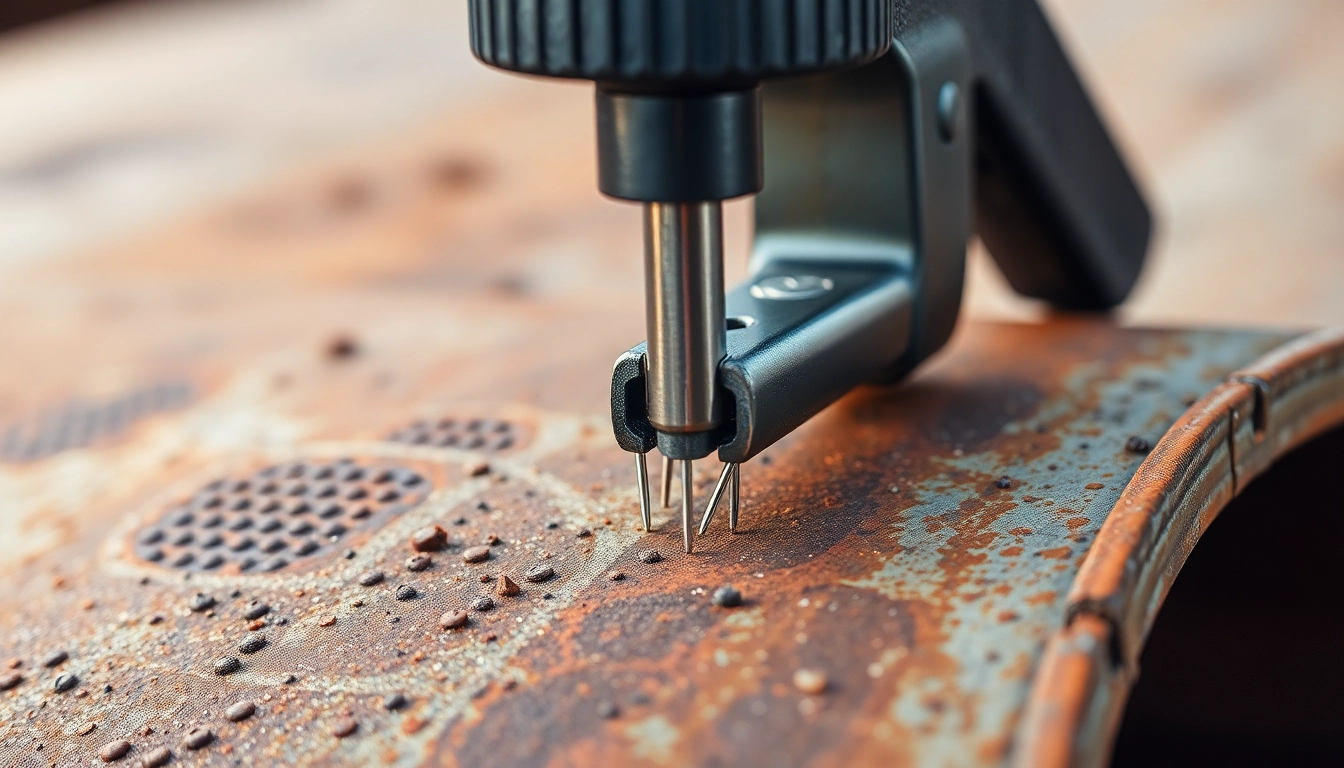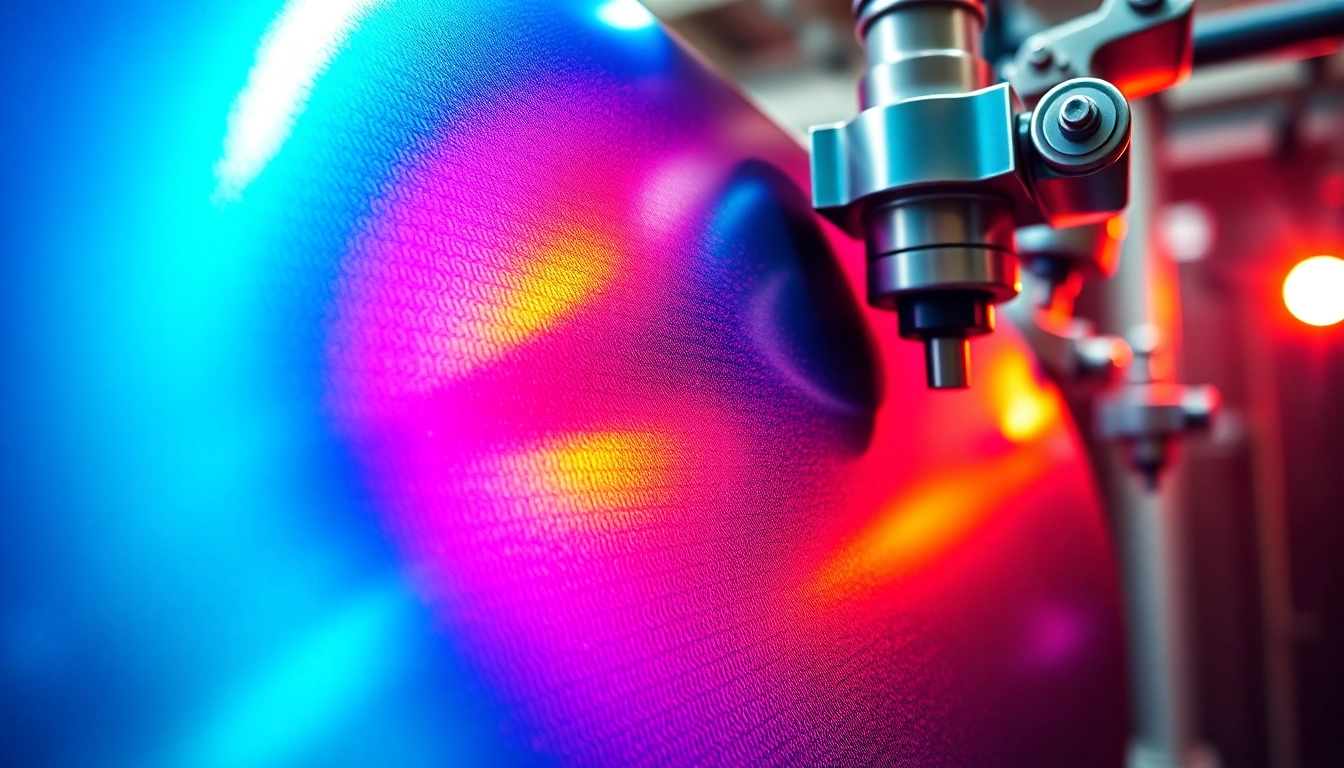Understanding the Needle Gun: Basics and Uses
Needle guns, also known as needle scalers, are powerful tools designed to efficiently remove rust, paint, and other contaminants from metal surfaces. Often used in industries such as manufacturing, automotive, and construction, these devices are invaluable for surface preparation prior to painting or welding. They operate by utilizing a series of rapidly vibrating needles that break up the material on the surface, making the cleaning process faster and more effective. For those looking to purchase a needle gun, understanding their functionality and applications is crucial.
What is a Needle Gun?
A needle gun is an air-powered tool, typically comprising multiple thin, pointed needles that rapidly strike the surface of the material being cleaned. The hammering action of the needles dislodges debris, scales, and rust, allowing for effective surface preparation. This tool can be either pneumatic, relying on compressed air, or electric, using an electric motor, depending on specific user needs or industry standards. The compact design of needle guns facilitates operation in intricate or tight spaces, making them particularly versatile for various applications.
Applications Across Industries
Needle guns find utility across numerous industries, demonstrating their wide-ranging efficiency and effectiveness:
- Manufacturing: Used for surface preparation of metal parts before welding, painting, or coating.
- Automotive Repair: Ideal for removing rust, paint, and oxidation from car frames and components prior to restoration.
- Marine Industry: Essential for maintaining ships and boats by cleaning metal surfaces that are exposed to harsh environments.
- Construction: Used for preparing surfaces before applying protective coatings or sealants.
- Metalworking Shops: Employed to clean and prepare tools, dies, and mold surfaces.
Key Features of Needle Guns
While needle guns share common operational principles, they can vary in features that enhance their usability and performance:
- Power Settings: Adjustable speed settings allow users to control the intensity of cleaning, accommodating different materials and jobs.
- Needle Count: Tools can come equipped with various numbers of needles, ranging from four to over a dozen, affecting their efficiency and coverage area.
- Weight and Ergonomics: Lighter, well-balanced tools reduce user fatigue and enhance usability over extended periods.
- Durability: Constructed from high-quality materials to withstand regular use in demanding environments.
Choosing the Right Needle Gun for Your Needs
When selecting a needle gun, it’s essential to consider various factors to ensure optimal performance suited to your specific applications.
Types of Needle Guns Available
Needle guns are categorized mainly into two types:
- Pneumatic Needle Guns: These models operate on compressed air and are typically more powerful and faster than electric counterparts. They are suitable for heavy-duty applications, making them ideal for industrial environments.
- Electric Needle Guns: Powered by electricity, these guns are often favored for lighter-duty tasks and are more portable, offering flexibility in various settings but may lack the speed of pneumatic models.
Factors to Consider for Optimal Performance
When choosing the right needle gun, consider these key factors:
- Air Supply: For pneumatic guns, assess the air compressor’s capacity. Most needle guns require between 8 to 16 CFM at 90 PSI for optimal performance.
- Needle Length: Longer needles may reach tighter spaces but might require more force to operate.
- Frequency of Use: Evaluate how often you will be using the tool to determine if a heavy-duty model or a light-duty one suits your needs better.
- Cost vs. Value: Investing in a quality tool may incur higher upfront costs but often results in long-term savings in terms of repairs and effectiveness.
Brand Comparisons and Recommendations
Various brands offer needle guns with differing features, reliability, and customer support. Popular brands include Ingersoll Rand, Chicago Pneumatic, and Von Arx. Reviews and comparisons highlighted the following:
- Ingersoll Rand: Known for their industrial-grade reliability and performance, often recommended for heavy-duty applications.
- Chicago Pneumatic: Offers a range of options suitable for both light and heavy-duty tasks with excellent ergonomic design.
- Von Arx: Particularly noted for their innovative features and user-friendly designs, making them suitable for a variety of users.
Best Practices for Using a Needle Gun
To get the best results from your needle gun, following best practices during usage is essential.
Preparation Before Use
Prior to using a needle gun, conducting proper preparation ensures safety and efficiency:
- Inspect the Tool: Ensure the needle gun is in good working condition, with no visible damage or wear.
- Choose the Right Needles: Select the appropriate needle size and count for your specific task and material type.
- Site Safety: Wear safety goggles, ear protection, and a dust mask to protect against debris and noise. Ensure the workspace is clear of flammable materials.
- Setup Air Supply: Connect the needle gun to the appropriate air compressor, ensuring supply meets the specified requirements.
Step-by-Step Usage Guide
To operate a needle gun effectively, follow these steps:
- Activate the air supply and ensure the needle gun is functioning correctly.
- Hold the needle gun firmly, angled appropriately for effective surface contact.
- Start the tool at a low speed to understand the material interaction.
- Gradually increase speed as needed, maintaining consistency and even pressure over the area being cleaned.
- Regularly check the surface condition and adjust settings as necessary.
- Once completed, shut off the tool, and disconnect the air supply.
Safety Tips When Operating a Needle Gun
Safety should always be a priority; hence, take note of these essential safety tips:
- Do not operate the tool without wearing the recommended personal protective equipment (PPE).
- Be aware of your surroundings and ensure proper ventilation to avoid inhaling dust and contaminants.
- Do not exceed the tool’s specifications, such as air pressure, to avoid potential damage or personal injury.
- Keep hands and body clear of the working area to prevent injury from flying debris.
Maintenance and Care for Long-Lasting Needle Guns
Like any other tool, proper maintenance of needle guns ensures longevity and efficiency in performance.
Cleaning and Storage Techniques
Regular cleaning after each use is crucial for maintaining performance:
- Remove Needles: Take out the needles and clean them with a brush to remove accumulated debris.
- Body Cleaning: Wipe down the body of the needle gun with a soft cloth to remove dust and rust residue.
- Storage: Store the tool in a dry place, ideally in a protective case to avoid physical damage.
Common Issues and Troubleshooting
Over time, needle guns may encounter various issues. Common problems include:
- Insufficient Power: If the tool is not operating at expected levels, check the air supply and ensure it meets requirements.
- Needle Breakage: High-frequency usage can lead to needle wear; ensure to replace damaged needles timely.
- Inconsistent Performance: Regularly check for clogged needles or air filters to ensure smooth operation.
When to Replace Your Needle Gun
A well-maintained needle gun can last for several years, but certain signs indicate it may be time for a replacement:
- Frequent breakdowns despite regular maintenance efforts.
- Significant physical damage or corrosion affecting functionality.
- Inability to operate effectively, even with new needles and proper air supply.
Advanced Techniques and Innovations in Needle Gun Technology
The needle gun market continues to evolve, with advancements aimed at enhancing efficiency and user experience.
Emerging Trends in Needle Gun Design
Recent innovations in needle guns include:
- Automated Controls: Some high-end models feature digital displays and controls for precision settings.
- Noise Reduction Technology: Many newer models are designed to operate more quietly, providing a better user experience while complying with regulations.
- Multi-Functionality: Some devices can convert between needle scalers and other tools, increasing versatility.
Enhancements for Efficiency and Precision
Modern needle guns incorporate technology to improve both efficiency and effectiveness:
- Vibration Dampening: New designs include advanced vibration-dampening features, reducing user fatigue and improving control.
- Enhanced Needle Materials: Innovations in material science have led to stronger and more durable needles, reducing wear and prolonging life.
Future of Needle Guns in Industrial Applications
As industries evolve and embrace technology, needle guns are anticipated to incorporate smart technologies and AI to optimize operations, making them an essential tool in surface preparation. As automation and robotics become widespread in manufacturing and metalworking, the needle gun remains a pivotal instrument in manual tasks, balancing technology and hands-on precision.


